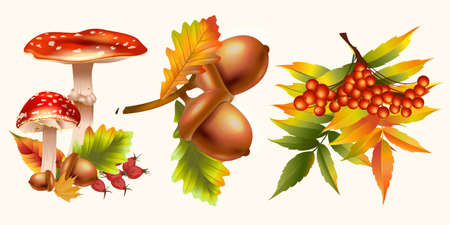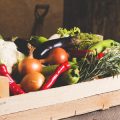Understanding Fall Vegetable Harvest Timing
One of the most important parts of growing a successful fall garden is knowing exactly when to harvest your vegetables. Picking them at the right time means better flavor, texture, and nutritional value. In this section, well help you learn how to tell when some of the most popular fall vegetables—like carrots, kale, pumpkins, and squash—are ready to come out of the ground or off the vine.
Why Timing Matters
Harvesting too early can mean bland flavor and poor texture, while waiting too long may lead to over-ripeness or spoilage. Each vegetable has its own signs that tell you its at peak ripeness. Paying attention to these signs ensures you get the best taste possible from your garden.
Signs Your Fall Vegetables Are Ready
Here’s a quick guide to help you determine the right time to harvest some common fall veggies:
| Vegetable | Harvest Signs |
|---|---|
| Carrots | Tops should be about 1/2 to 1 inch in diameter. Gently pull one up to check size. Cooler soil brings out their sweetness. |
| Kale | Pick leaves when they’re about the size of your hand. Younger leaves are more tender and less bitter. Avoid yellowing leaves. |
| Pumpkins | The skin should be hard and deep orange. Tap it—if it sounds hollow, it’s ready. The stem should be dry and starting to shrivel. |
| Winter Squash (like Butternut or Acorn) | The rind should be firm and dull, not shiny. Try pressing your fingernail into the skin—it shouldn’t leave a mark. |
Helpful Tips for Checking Readiness
- Use your senses: Look for color changes, feel for firmness, and even smell if something seems ripe.
- Avoid guesswork: For root crops like carrots, gently dig around one plant before pulling an entire row.
- Pace yourself: Not all vegetables mature at once—harvest as needed so others can continue growing.
The Role of Frost in Flavor
Certain fall vegetables like kale and carrots actually get sweeter after a light frost. This happens because plants convert starches into sugars as a natural defense against cold temperatures. If youre expecting a mild frost, leaving these veggies in the ground a bit longer can enhance their flavor even more.
2. Tools and Techniques for a Successful Harvest
When it comes to harvesting fall vegetables, having the right tools and using proper techniques can make a big difference in preserving flavor, texture, and shelf life. Fall crops like carrots, beets, kale, and squash are often more delicate than they appear. To get the most out of your harvest, its important to handle them with care and use equipment that minimizes damage.
Essential Harvesting Tools
Using the correct tools not only speeds up the process but also helps reduce bruising or breaking of your veggies. Heres a quick guide to some must-have tools for a successful fall harvest:
| Tool | Best For | Why It Matters |
|---|---|---|
| Harvesting Knife | Kale, cabbage, broccoli | Makes clean cuts at the base without damaging nearby plants |
| Garden Fork | Carrots, potatoes, beets | Loosens soil gently to lift root vegetables without snapping them |
| Pruning Shears | Peppers, beans, herbs | Allows for precise snipping to avoid tearing stems or vines |
| Baskets or Buckets with Padding | All harvested produce | Cushions vegetables during transport to prevent bruises and dents |
| Gloves with Grip | General harvesting tasks | Protects hands while giving better control when picking or pulling crops |
Best Harvesting Techniques by Vegetable Type
The way you harvest each vegetable can affect its taste and longevity. Here are some simple techniques for common fall crops:
Root Vegetables (Carrots, Beets, Radishes)
Gently loosen the soil around each plant using a garden fork before pulling them up. Avoid tugging forcefully as this can snap the roots. Brush off excess dirt but don’t wash them until youre ready to use them—excess moisture encourages rot during storage.
Leafy Greens (Kale, Collards, Spinach)
Use a sharp knife or shears to cut outer leaves first; this allows the plant to continue growing new leaves in the center. Harvest in the morning when leaves are crisp and full of moisture for the best flavor.
Squash and Pumpkins
Cut stems with pruning shears or a harvesting knife, leaving at least 2–3 inches of stem attached—this helps prevent decay. Handle carefully; dropping or bumping can bruise the skin and shorten storage life.
Cabbage and Broccoli
Cut heads at the base using a sturdy knife. For broccoli, smaller side shoots may continue to grow after the main head is harvested. Keep an eye out for those extra mini-harvests!
Avoid Common Harvesting Mistakes
- Don’t wait too long: Overripe vegetables lose flavor and texture quickly.
- Avoid wet conditions: Harvesting when plants are wet increases risk of mold and disease.
- Handle gently: Bruised produce has a much shorter shelf life.
- Store promptly: Move harvested crops out of direct sun and into cool storage as soon as possible.
Treat Your Harvest Right from the Start
Your hard work in the garden deserves a flavorful reward! With these tools and techniques in hand, youll keep your fall vegetables tasting fresh longer—and enjoy every bite of your autumn bounty.

3. Post-Harvest Handling and Storage Tips
Once youve harvested your fall vegetables at their peak, its important to handle and store them properly to preserve their flavor and freshness. Each type of vegetable has its own needs when it comes to cleaning, curing, and storage. By following a few simple steps, you can enjoy your gardens bounty well into the winter months.
Cleaning Your Harvest
Start by gently brushing off any excess soil from root vegetables like carrots, beets, and potatoes. Avoid washing them unless they are very dirty—moisture can lead to mold during storage. For leafy greens or veggies that need rinsing (like kale or broccoli), make sure to dry them thoroughly before storing.
Curing for Longer Shelf Life
Curing helps harden the skin of certain vegetables, making them last longer in storage. This is especially useful for squash, garlic, onions, and sweet potatoes.
How to Cure Fall Vegetables
| Vegetable | Curing Method | Curing Time |
|---|---|---|
| Winter Squash | Store in a warm (80–85°F), dry place with good air circulation | 10–14 days |
| Garlic & Onions | Hang or lay out in a dry, shaded area with airflow | 2–3 weeks |
| Sweet Potatoes | Keep in high humidity (85–90%) at 80–85°F | 7–10 days |
Storing for Maximum Freshness
The key to successful storage is matching each vegetable with the right environment—cool and moist for some, warm and dry for others. Heres a quick guide:
Recommended Storage Conditions by Vegetable Type
| Vegetable | Storage Temperature | Humidity Level | Storage Tip |
|---|---|---|---|
| Carrots & Beets | 32–40°F | High (90–95%) | Store in perforated plastic bags in the fridge or root cellar |
| Winter Squash & Pumpkins | 50–55°F | Low (50–70%) | Avoid refrigeration; store on shelves in a single layer with space between each fruit |
| Kale & Spinach | 32–36°F | High (90–95%) | Wrap in paper towels and keep in an airtight container in the fridge |
| Potatoes | 40–50°F | Moderate (80–90%) | Store in a dark place; avoid sunlight to prevent greening |
| Cabbage & Broccoli | 32°F | High (95%) | Use soon after harvest; best kept refrigerated in plastic bags with holes for ventilation |
A Few Extra Tips for Success:
- Avoid stacking vegetables too tightly—airflow helps prevent spoilage.
- Check stored produce weekly for signs of decay or mold and remove any affected items promptly.
- If youre short on space indoors, consider using an insulated cooler or garage as a makeshift root cellar.
- Add labels with harvest dates so you use older veggies first.
Taking the time to properly clean, cure, and store your fall vegetables will reward you with delicious meals long after the growing season ends.
4. Maximizing Flavor Through Proper Harvest Practices
Getting the best flavor from your fall vegetables isn’t just about planting the right varieties—it’s also about knowing how and when to harvest them. Several key factors come into play: soil health, weather conditions, and harvest timing. Let’s break down how each of these elements affects the taste of your produce and what you can do to make the most of them.
Soil Health: The Foundation of Flavor
Healthy soil is rich in organic matter, well-draining, and full of beneficial microbes. These characteristics help plants absorb nutrients more effectively, which directly impacts their flavor. For example, carrots grown in nutrient-rich soil tend to be sweeter and more vibrant in color.
Tips for Maintaining Soil Health:
- Add compost regularly to replenish nutrients.
- Use mulch to retain moisture and regulate temperature.
- Rotate crops yearly to prevent nutrient depletion and disease.
Weather Conditions: Temperature Matters
Cooler temperatures in fall can enhance the sweetness of many vegetables. As the nights get colder, plants like kale, Brussels sprouts, and carrots convert starches into sugars as a natural antifreeze—resulting in a better taste on your plate.
Vegetables That Benefit from Cold Weather:
| Vegetable | Flavor Benefit | Ideal Condition |
|---|---|---|
| Kale | Sweeter, less bitter | After first frost |
| Carrots | Sweeter and crunchier | Nights below 50°F |
| Brussels Sprouts | Milder flavor | Several frosts improve taste |
Harvest Timing: Pick at Peak Ripeness
The timing of your harvest plays a huge role in how flavorful your veggies will be. Harvest too early, and they might be bland or underdeveloped; wait too long, and they could become tough or overly fibrous. Paying attention to visual cues and touch is key.
Signs It’s Time to Harvest:
- Cabbage: Heads feel firm when squeezed lightly.
- Beets: Should be about the size of a golf ball to tennis ball for best texture and flavor.
- Squash: Skin should be hard enough that you can’t pierce it with your fingernail.
By understanding how soil quality, cool fall weather, and precise harvest timing all work together, you’ll set yourself up for a deliciously rewarding harvest season. Your vegetables will not only look great—they’ll taste amazing too.
5. What to Do with Your Fall Harvest
Once youve gathered your flavorful fall vegetables, its time to make the most of them in your kitchen. Whether youre cooking up cozy meals, preserving your harvest for later, or trying your hand at fermentation, there are plenty of ways to enjoy the fruits of your labor. Here are some ideas that align with popular American autumn traditions.
Cooking: Classic Fall Recipes
Fall is the perfect season for warm, hearty dishes that showcase the natural sweetness and richness of root vegetables and leafy greens. Try incorporating your harvest into these popular American recipes:
| Dish | Main Vegetables | Tips |
|---|---|---|
| Butternut Squash Soup | Butternut squash, onions, carrots | Roast veggies first for deeper flavor |
| Sweet Potato Casserole | Sweet potatoes | Add pecans and marshmallows for a traditional Southern twist |
| Kale and White Bean Stew | Kale, carrots, onions | Use smoked paprika or sausage for extra depth |
| Roasted Root Veggie Medley | Carrots, beets, parsnips, turnips | Toss with olive oil and rosemary before roasting |
Fermenting: Add Flavor and Probiotics
Fermenting is not only a great way to preserve vegetables but also enhances their nutritional value. Try fermenting cabbage into sauerkraut or making spicy carrot sticks. Heres a quick guide:
| Vegetable | Fermented Product | Flavor Tip |
|---|---|---|
| Cabbage | Sauerkraut | Add juniper berries or caraway seeds for extra flavor |
| Carrots | Spicy Pickled Carrots | Add garlic and chili flakes to the brine for heat |
| Beets | Lacto-Fermented Beets | Add ginger slices for a zesty twist |
Preserving: Keep the Harvest Going All Winter Long
If you want to enjoy your harvest beyond the season, preserving is key. Freezing, canning, and drying are all effective methods.
Freezing Tips:
- Kale & Spinach: Blanch for 2 minutes, then freeze in portions.
- Sliced Carrots: Blanch for 2-3 minutes before freezing to maintain texture.
- Winter Squash: Roast and mash before freezing in airtight containers.
Canning Ideas:
- Pumpkin Butter: A sweet spread perfect on toast or pancakes (note: follow USDA guidelines as pumpkin puree is not recommended for home canning).
- Dilly Beans: Green beans pickled with dill and garlic make a crunchy snack.
- Salsa Verde: Use tomatillos and green tomatoes from your fall garden.
Drying Suggestions:
- Zucchini Chips: Slice thin and season before dehydrating.
- Kale Chips: Toss with olive oil and salt; bake until crispy.
- Dried Herbs: Dry thyme, oregano, or sage for use all year long.
Cultural Traditions: Celebrate the Season Like an American Local
The fall harvest is deeply rooted in American culture. From Thanksgiving feasts filled with garden-grown sides to weekend chili cook-offs using fresh produce like peppers and tomatoes, there are plenty of seasonal traditions to enjoy. Don’t forget about pumpkin patches and apple cider-making events—great ways to share your love of gardening with friends and family.
Your fall harvest isn’t just food—it’s an opportunity to embrace the season through comforting meals, creative preservation techniques, and meaningful traditions that connect you to the land and community.


